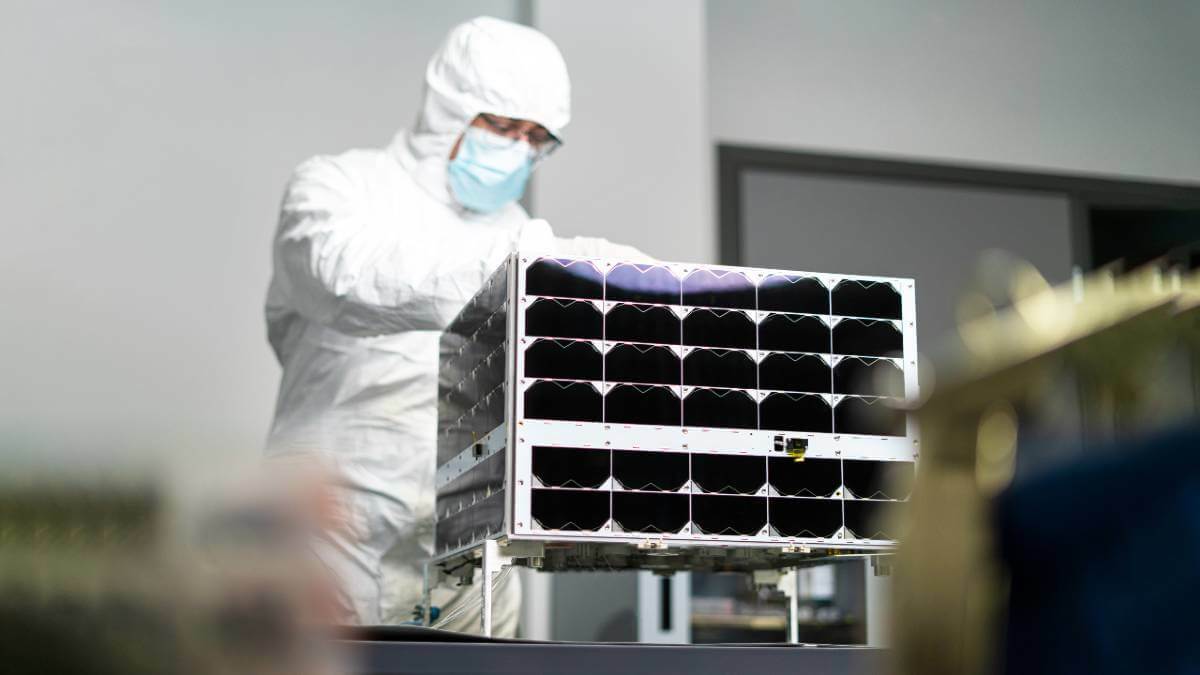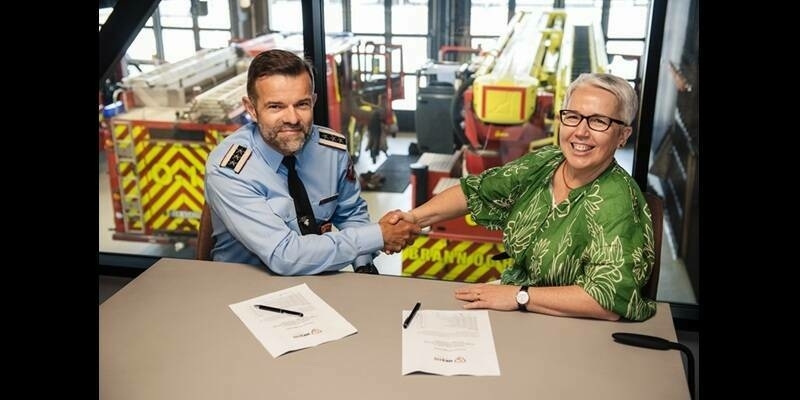Norway’s Kongsberg Defence & Aerospace (Kongsberg) has placed an order for three microsatellites with Lithuanian mission integrator NanoAvionics for a space-based maritime surveillance mission covering the North Sea area. All three satellites will be based on NanoAvionics’s largest satellite bus so far, the MP42 microsatellite bus.
The surveillance payload will consist of instrumentation developed by KONGSBERG to include '"Automatic Identification System" (AIS) reporting and a navigation radar detector, developed by the Norwegian Defence Research Establishment (FFI), that analyses vessels' radar use. Combining these provides an overview of ship traffic in the area, to include detection of vessels not reporting correct AIS data.
It is the second time that FFI and NanoAvionics are working together. Previously, FFI was part of a consortium on a Norwegian-Dutch military use of space (MilSpace) mission where NanoAvionics built two nanosatellites.
“Supplying the initial satellites for the first Norwegian maritime constellation for Kongsberg, together with its more than 200 years of company history, makes this project very special to the entire team at NanoAvionics,” said Vytenis J. Buzas, co-founder and CEO of NanoAvionics. “The agreement with Kongsbergis a perfect example of our technological capabilities and proof that adding microsatellites to our portfolio was the right move. While nanosatellites are still in a high demand, it’s the microsatellites that offer new opportunities and room for more advanced missions and applications. The mission also demonstrates the continued strength of European space companies and agencies working together.
“Staying at the top of the satellite industry requires very quick deployment of innovations, especially for surveillance applications. Smallsats, like our MP42, play an enabling role in quickly deploying those monitoring assets while contributing to the security in sea waters.”
In combination with advanced data analysis, the surveillance capacity will contribute to defence operations and Norway's important role in surveillance of the High North. In addition, it is possible to rapidly identify vessels engaged in environmental crime, illegal fishing, smuggling and other illegal activities. Supporting search and rescue for vessels in distress are also capabilities of the constellation.
The surveillance capacity of the satellites will be enhanced by encryption software, developed by Norwegian company Eidsvoll Electronics AS, which provides secure communication for the satellites. All three satellites will be operated by KSAT (Kongsberg Satellite Services) the world's leading provider of ground station services.
The three satellites will form the basis for Norway’s first satellite constellation. The plan is to expand the fleet with more satellites to increase the coverage areas and revisit times, and equip them with different types of sensors for other types of data to enhance the situational awareness capabilities.
Eirik Lie, President of Kongsberg Defense & Aerospace, said: “With this, we take a successful model from the defence industry into the space industry. Close collaboration between users, researchers and industry has created world-leading products. We are now making a similar investment with the goal of creating a Norwegian satellite adventure that will lift the Norwegian space industry. We are enthusiastic about the strong NanoAvionics capabilities to support this initiative.”
While all ships travelling in the North Sea must have active AIS to identify themselves, allowing KONGSBERG to capture their signals and map normal traffic, some vessels turn off their AIS to stay hidden. Ships wishing to remain hidden by switching off the identification equipment will still be exposed by capturing the navigation radar of the ships. Turning them off carries a high risk of colliding with other ships and obstacles in the water such as icebergs, especially at night. The advanced antenna to pick up the radar signals has been developed by FFI.
NanoAvionics’s MP42 bus is one of the first commercially available modular microsatellite buses in the industry, which had its flight-heritage mission in April 2022. Having adopted the principles of NanoAvionics’s successful nanosat bus product line, the modular MP42 extends that experience with the same cost-efficient production approach, requiring minimal reconfiguration. The MP42 buses are highly versatile with performance capabilities optimised for remote sensing, high data throughput, complex communications missions, emergency communications, and research missions.

Subscribe to our newsletter
Stay updated on the latest technology, innovation product arrivals and exciting offers to your inbox.
Newsletter

